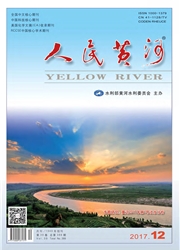

 中文摘要:
中文摘要:
将菹草( Potamogeton crispus)成株置于50、100、150、200μW/cm2剂量的UV-B辐射下,利用调制叶绿素荧光仪测定紫外辐射对菹草成株PSⅡ系统的损伤程度。结果表明:急性辐射初期叶片最大光合速率、耐强光能力、叶片捕光能力均随辐射剂量增大而减少;16 d后,UV-B辐射剂量小于100μW/cm2的实验组,辐射促进其叶片光能利用效率、最大光合速率、耐强光能力,而高于100μW/cm2的实验组,随辐射时间延长,其抑制作用持续,最终高于100μW/cm2剂量组植株均死亡,而低于100μW/cm2剂量组差异不大。结果表明辐射剂量小于100μW/cm2时,UV-B辐射对叶片最大光合速率、耐强光能力、叶片捕光能力的影响较小,而高于100μW/cm2时,UV-B辐射对植株叶片PSⅡ系统构成的损伤,降低了植株叶片的光合作用能力。春末夏初陆上紫外辐射逐渐增加,对菹草伤害程度加剧,因此,紫外辐射可能是促进菹草春末夏初大批衰亡的重要原因。
 英文摘要:
英文摘要:
The adult plants of Potamogeton cripus were exposed to UV-B radiation with different doses ( 50, 100, 150 and 200μW/cm2 ) in lab, which were checked for the degree of injury to photosystemⅡin the plants by means of modulated chloro-phyll fluorometer ( DIVING-PAM) . The results showed that the maximum leaf photosynthetic rate, light-resistant ability and light-harvesting capacity all increased with the increasing radiation dose at the initial stage. The maximum photosynthetic rate, light-re-sistant ability and light-harvesting capacity were promoted when the UV-B radiation dose below 100μW/cm2 in the initial 16 days, and were inhibited when the dose beyond 100μW/cm2 when the inhibitory effect lasted with prolonging the irradiation time. Even-tually, the treatment group all declined when the dose beyond 100μW/cm2 , and the differences between the treatment groups were small when the dose below 100μW/cm2 . It indicated that the maximum plant photosynthetic rate, light-resistant ability and light-harvesting capacity were injured less when the dose below 100μW/cm2 , while the photosystemⅡwas injured by UV-B radiation when the dose beyond 100μW/cm2 , so that the photosynthetic capacity reduced. Because the intensity of ultraviolet radiation on land surface increased in the late spring and early summer, the degree of damage to the plants increases evidently. Thus, the re-sults of this study indicate that UV-B radiation may be an important factor leading to mass mortality of P. crispus in late spring and early summer.
 同期刊论文项目
同期刊论文项目
 同项目期刊论文
同项目期刊论文
 Spatial and Temporal Variability of Precipitation and Dryness/Wetness During 1961-2008 in Sichuan Pr
Spatial and Temporal Variability of Precipitation and Dryness/Wetness During 1961-2008 in Sichuan Pr Soil Respiration, Nitrification, and Denitrification in aWheat Farmland Soil under Different Managem
Soil Respiration, Nitrification, and Denitrification in aWheat Farmland Soil under Different Managem Simulated acid rain changed the proportion of heterotrophic respiration in soil respiration in a sub
Simulated acid rain changed the proportion of heterotrophic respiration in soil respiration in a sub Global annual soil respiration in relation to climate, soil propertiesand vegetation characteristics
Global annual soil respiration in relation to climate, soil propertiesand vegetation characteristics Chlorophyll content and photosystem II efficiency in soybean exposed to supplemental ultraviolet-B r
Chlorophyll content and photosystem II efficiency in soybean exposed to supplemental ultraviolet-B r 期刊信息
期刊信息
